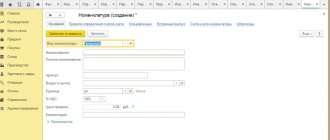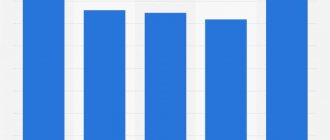Product cost
Of this value, the influence of prices on materials is + 0.33 kopecks. Consequently, the impact of product prices accounts for + 0.39 - (+ 0.33) = + 0.06 kopecks. This means that a decrease in wholesale prices for the products of this enterprise increased the costs of 1 ruble of marketable products by + 0.06 kopecks. The total influence of all factors (balance of factors) is:
- material costs;
- labor costs;
- insurance contributions;
- depreciation of fixed assets (funds);
- other costs (depreciation of intangible assets, rent, mandatory insurance payments, interest on bank loans, taxes included in the cost of production, deductions to extra-budgetary funds, travel expenses, etc.).
Material Cost Analysis
Material costs are one of the main cost items of any production process. In this regard, they are usually under the close supervision of employees of the economic planning department. After all, it is not enough to calculate material costs; it is also important to analyze the results obtained.
One of the main coefficients that is calculated using the material costs indicator is material intensity. To calculate it, it is necessary to divide material costs by the total cost of manufacturing goods. This indicator reflects the share of material costs in the total cost of goods.
Another approach to determining material intensity is to calculate the share of material costs in production. In this case, material intensity is the ratio of material costs to the number of manufactured goods in value or physical terms.
An increase in this indicator means that the amount of material costs per product has increased, and the profitability of goods has decreased. This is why managing materials intensity is the key to reducing costs and increasing production profitability.
Separately, you can determine the profit per 1 ruble. material costs. This can be done using the formula:
PMZ = P / MZ.
Where:
- PMZ is the profit that falls on one ruble of material costs;
- P – income from the sale of goods;
- MH - the amount of material expenses that were incurred for the manufacture of goods.
Production costs of sold products
production costs are one of the main indicators calculated in accordance with international and many national accounting standards and indicated in the income statement. Russian accounting retains the use of the indicator “cost of sales of goods, products, works, services”, which (unlike the generally accepted cost calculation in the world) includes the standard “accrued depreciation of assets for production (shop) purposes”, which is not shown in full (in a separate article ) in the income statement, as is customary in the global community. This makes it difficult to perform the recalculations necessary to estimate the value of the property.
total sales costs - The total costs of production and sales of products, and this amount includes depreciation charges, as well as management and administrative (general business) and commercial expenses. In international practice (IFRS, MCO) the value... ...
Costs of production in the balance sheet
When filling out line 5650, data on debit turnover for the reporting year according to cost accounting accounts is used (20 “Main production”, 23 “Auxiliary production”, 25 “General production expenses”, 26 “General expenses”, 28 “Defects in production”, 29 “ Servicing production and facilities”, 44 “Sales expenses”) in correspondence with accounts 60 “Settlements with suppliers and contractors”, 76 “Settlements with various debtors and creditors”, 96 “Reserves for future expenses”, etc. minus internal turnover.
Changes in the balance of account 41 when determining the indicators of lines 5670 and 5680 are taken into account by organizations engaged in trading activities, provided that they have entered an additional line “Actual cost of goods purchased for resale.” If an organization accounts for goods on account 41 at sales prices with a reflection of the trade margin on account 42 “Trade margin”, then when calculating the indicators of lines 5670 and 5680, the debit balance on account 41 at the beginning and end of the reporting year is reduced by the credit balance on account 42 for these dates.
* * *
So, the balances accumulated on account 20 by the end of the reporting period should be entered into balance sheet line 1210 called “Inventories.” When a certain balance is formed in the “Main Production” account at the end of the reporting period, this indicates a balance of work in progress at the enterprise.
Direct production costs should be recorded on account 20. In addition, at the end of each month, a certain share of expenses from accounts 23, 25, 26 should be attributed to this account.
The accounting policy should be formulated so that this document provides a criterion for distinguishing direct costs from indirect ones, principles for assessing oil refineries, and methods for closing the account of indirect costs.
Care must be taken to ensure that work in progress is recorded correctly, since such data is entered into the balance sheet and, if incorrectly calculated, can significantly distort the financial performance of the organization.
Similar articles
- Direct material costs
- Direct and indirect production costs
- Finished products are reflected in the balance sheet...
- Production costs
- Accounting for costs of auxiliary production
Production costs on balance sheet
Thus, in accordance with the Tax Code of the Russian Federation, direct material costs are expenses of an economic entity aimed at providing the production cycle with the necessary materials, raw materials, semi-finished products, components, as well as for the purchase of services and work necessary in production. In other words, direct costs include expenses that are directly related to the implementation of the main activity.
If the resulting value is less than one, this indicates that the enterprise is unprofitable. If the indicator is equal to one, then the profit received is equal to the expenses, and the organization did not earn anything in the reporting period. If the indicator is greater than one, this means that the enterprise is profitable, that is, its activities bring profit.
Interesting to read: Deadline for Returning Tax Deductions for the Purchase of an Apartment
Types and classification
It would seem that everything is simple: there is an established list, and we focus on it. But in practice, there is also a division of MH into:
- straight;
- indirect.
This gradation is also provided for in tax accounting. In particular, Article 318 of the Tax Code of the Russian Federation. True, taxpayers have the right to independently establish a list of direct MH, but in compliance with the established requirements for them. According to the norms of the Tax Code of the Russian Federation, direct material costs include:
- expenses of the organization for the purchase of raw materials and supplies directly used in the production of goods (performance of work, provision of services), which are a necessary component or form the basis of the product;
- company expenses for the purchase of components undergoing installation or semi-finished products undergoing additional processing.
Reflection of main production in the balance sheet
The debit balance formed on account 20 at the end of the month precisely represents the cost of work in progress (refinery). This balance accumulated over the year must be added to other indicators at the stage of entering data into the balance sheet line “Inventories”.
The volume of products that has not gone through all stages of the production process is considered work in progress (clause 63 of the Regulations on accounting and financial reporting in the Russian Federation, approved by order of the Ministry of Finance dated July 29, 1998 No. 34n). This category also includes products that have not passed testing or technical acceptance. The above definition also applies to works and services.
Accounting for work in progress in the provision of services
It was previously discussed what work in progress is, but the concept does not apply to services. To calculate the income tax required for payment, the company should reduce the amount of income received from operating activities by the amount of direct expenses and not distribute the balance to the income tax.
For example, in a hotel, expenses are taken into account in the period of occurrence, and the distribution of balances of IR for the enterprise is simply not carried out.
Thus, the accounting policy of the enterprise (if it is structured this way) creates all the conditions for simplifying accounting at the enterprise, because it will be consistent with tax accounting.
Material costs: formula
The balance of accounts 20 “Main production”, 23 “Auxiliary production”, 29 “Service production and facilities” as of the reporting date indicates the balance of work in progress (WIP). The balance of work in progress, own semi-finished products (account 21 “Semi-finished products of own production”) and unwritten off losses from defects (account 28 “Defects in production”) are reflected in the balance sheet asset on line 1210 “Inventories” (clause 20 PBU 4/99, Order of the Ministry of Finance dated 07/02/2021 No. 66n).
At the same time, it is difficult to say what the balance sheet calculation formula is for material costs. Indeed, in the data in the “Inventory” line, along with material costs, labor costs in WIP and other expenses can be reflected, depending on the method of assessing WIP. In addition, the line “Inventories” reflects the materials themselves in the form of their warehouse balance, which has not yet been used up, accordingly, they are not yet material costs, as well as finished products, the material costs for which have already taken the form of a finished product of labor and not are WIP, etc.
Fixed costs. formula. definition. example calculation in excel
The data was generated for a month - this is a generally accepted period for calculating costs. The balance sheet is compiled for the entire enterprise, and not just, for example, for the cutting shop, so internal movements between warehouses and workshops are not taken into account, so as not to double the turnover.
Such uncertainty in regulations indicates that the enterprise, in accordance with the characteristics of its production, should reflect in its own accounting policies which costs for accounting purposes will be classified as direct and which as indirect.
Legal entities need to submit reports in the form of a balance sheet only once a year. It shows the financial situation of a given enterprise at the end of the year. Very often, those who manage an enterprise are faced with the need to find out what the economic situation of a given enterprise is, long before the end of the reporting year.
The balance of work in progress in accounts 20, 23, 29 is the balance of work in progress in accounting for the organization as a whole. Work in progress - account 20 + account 23 + account 29, not closed at the end of the reporting period - the balances on them are summed up with other data entered in the “Inventories” line in the balance sheet.
As a rule, the information in the Explanations deciphers the numerical indicators of the Balance Sheet or the Statement of Financial Results.
Let us remind you that accounts 25 “General production expenses” and 26 “General operating expenses” do not have a balance at the end of the month.
But inventories can be written off in three different ways at the organization’s discretion. The most common method and easiest to use is writing off at actual cost.
Costs of production in the balance sheet
The costs of production and sales of products significantly affect the amount of profit and, accordingly, the amount of tax payments to the state budget. To ensure the unity of approaches of all economic entities to the formation of profit and the rules for its taxation, the state establishes the principles and procedure by which taxpayers are required to keep records of the costs of production and sales of products, and regulates the sources of coverage for different groups. The document regulating the formation of the cost of products (works, services) in the Republic of Belarus is the Basic Provisions on the composition of costs included in the cost of products (works, services).
The group of other costs covers elements of various economic content: travel expenses, entertainment expenses, advertising expenses, audit and consulting services, rent; leasing payments; payment for bank services, communication services and contributions to the repair fund and other costs. This also includes a block of taxes and deductions included in the cost price: land tax, deductions from state enterprises to the innovation sector fund. Other costs also include insurance premiums for types of compulsory insurance, including compulsory insurance against industrial accidents and occupational diseases.
Main production in the balance sheet (nuances)
Defects subject to correction are also written off for the main production (Dt 20 Kt 28). Every month, from the credit of account 23 to account 20, part of the costs of auxiliary production is received, from the credit of account 25 - indirect costs (or part thereof) to ensure production, from the credit of account 26 - part of general business expenses (if the organization does not use the direct costing method and does not write off these expenses are debited to account 90).
Interesting read: Work experience, what does it include?
The balance on the accounts “Main production”, “Auxiliary production”, “Service production and farms” at the end of the reporting period indicates that there is unfinished production. The cost characterizing work in progress at the end of the reporting period is taken into account in the data that forms the indicator of line 1210 of the “Inventories” balance sheet.
Line 1210 of the balance sheet “Inventories”
In line 1210 enter data on the total value of the company's inventories listed as of December 31, 2015. A breakdown of the data in line 1210 by groups and types of inventories listed in the organization is given in Section 4 of the Explanations to the Balance Sheet and the Income Statement. So, for example, the data could be given here:
- on the cost of raw materials and materials not written off for production, recorded in the debit of accounts 10 “Materials”, 15 “Procurement and acquisition of material assets”, 16 “Deviation in the cost of material assets”;
- on the cost of goods intended for resale, recorded in the debit of account 41 “Goods”;
- on the cost of finished products, recorded in the debit of account 43 “Finished products”;
- on the cost of finished products and goods shipped to customers, recorded as the debit of account 45 “Goods shipped”;
- on the amount of costs in work in progress recorded in accounts 20 “Main production”, 23 “Auxiliary production”, 29 “Service production and facilities”;
- on the amount of sales costs that were not written off to the accounts for accounting for sales revenue, recorded in the debit of account 44 “Costs of circulation”;
- on the amount of unwritten off deferred expenses recorded in the debit of account 97 “Deferred expenses”.
This is interesting: An increase in retained earnings indicates
Raw materials
Raw materials include material assets that are the basis for the manufacture of a particular product, are included in its composition or are necessary components in its manufacture. In addition, raw materials are considered to be resources that are fully used in the process of the company's activities. According to the Chart of Accounts, these types of assets also include: purchased semi-finished products; finished components; fuel (oil, kerosene, gasoline, etc.) and lubricants; container; spare parts for repair of fixed assets; production waste (stumps, cuttings, shavings, etc.); inventory, tools and household supplies that are not included in fixed assets; special clothes.
Accounting for such property is regulated by PBU 5/01. According to paragraph 5 of the document, raw materials and materials are taken into account at actual cost.
Line 1210 includes the initial cost of raw materials and materials not written off for production as of December 31, 2015. It is recorded in the debit of account 10 “Materials”. This balance line shows the debit balance of this account as of the mentioned date.
Materials can be reflected both at actual cost and at accounting (planned) prices. When using the second option, their cost is formed using accounts 15 “Procurement and acquisition of material assets” and 16 “Deviation in the cost of material assets.” In this situation, line 1210 of the balance sheet indicates the debit balance of account 10 (accounting price of materials), 15 (cost of materials in transit) and 16 (deviations). If the balance of account 16 is credit, then it reduces the cost of materials at which they are reflected in the balance sheet.
The company has the right to create a reserve for depreciation of the cost of raw materials and materials. Its amount is taken into account in the credit of account 14 “Reserves for reduction in the value of material assets.” If there is a reserve, its amount reduces the cost of materials at which they are reflected in the balance sheet.
Formation of the actual cost of materials.
The actual cost of materials is based on all costs associated with the acquisition of this property (excluding VAT, if the company accepts it for deduction). According to paragraph 6 of PBU 5/01, such costs include, in particular:
- amounts paid to the materials supplier;
- expenses for information and consulting services related to the purchase of materials;
- customs duties accrued when importing materials into Russia;
- expenses for the services of the intermediary through whom the materials were purchased;
- costs for the procurement and delivery of materials to the place of their use;
- materials insurance costs;
- expenses for maintaining the company's procurement and warehouse division;
- interest costs on commercial loans provided by material suppliers;
- expenses for paying interest on bank loans received for the purchase of materials and accrued until the moment of their receipt;
- expenses for bringing materials to a state suitable for use for the intended purposes (for example, for their additional processing, sorting, packaging, improving technical characteristics);
- general business expenses directly related to the purchase of materials.
Like any other property, materials can be obtained in several ways. For example, purchased for a fee, manufactured by the company itself, received as a contribution to the authorized capital or free of charge, acquired as part of commodity exchange (barter) transactions, capitalized as a result of disassembly and dismantling of fixed assets. Depending on the method of acquiring materials, the company forms their initial cost.
This site is a non-profit information project and does not provide any services. Documents, reports, instructions, videos and other materials are taken from open sources.
Logos and trademarks posted on the site belong to their legal owners and copyright holders.
Analysis of costs for production and sales of products (works, services)
One of the most intensive areas of accounting is accounting for production costs and calculating the cost of products produced, work performed or services provided. The success of a company depends on the formation of production costs for the following reasons: 1) the cost of producing a product is the most important element in determining the selling price, 2) information about the cost of production often underlies the forecasting and management of production and costs, 3) knowledge of the cost is necessary to determine the balance of material accounts at the end of the reporting period.
There are a number of articles in the financial statements that directly indicate the unfavorable financial position of a commercial organization. These are the so-called “sick” items: “Losses”, “Loans and loans not repaid on time”, “Overdue receivables and payables”, “Overdue bills issued (received)”. When reading the balance sheet, you need to pay attention to these items first.
We analyze the costs of - production of products - calculation of the profitability of the enterprise
Based on this formula, you can determine the level of profitability of any of the above indicators. For this purpose, the company's balance sheet is usually used (Form No. 1). It contains data on the amount of fixed assets, equity and borrowed capital, the amount of current and non-current assets, as well as the liabilities of the organization.
Calculations and subsequent analysis of profitability is a rather labor-intensive process, but it gives a clear idea of how profitable a business is in a specific period of time, and in which direction it should move to increase the return on investment.
Costs in work in progress
Definition: in clause 63 of the Regulations on maintaining accounting and financial statements in the Russian Federation, approved by Order of the Ministry of Finance of Russia dated July 29, 1998 No. 34n, according to which work in progress refers to products (works) that have not passed all stages (phases, redistributions) provided for by the technological process, as well as incomplete products that have not passed testing and technical acceptance.
The article “Costs in work in progress” (line 213) reflects the presence of costs for work in progress and unfinished work (services), which are accounted for in the appropriate accounting accounts. In this case, work in progress is reflected in the assessment adopted by the organization when forming its accounting policy in accordance with regulatory documents on accounting. In trading organizations, the balance of work in progress is reflected in account 44 “Sales expenses”, and in other organizations - in account 20 “Main production”.
Tax accounting of work in progress
The accounting policy of an enterprise also determines the principles of taxation of profits by accruing direct and indirect expenses to profits. Direct costs are those that are included in the cost of production and relate to a specific type of product. Indirect cannot be attributed to a specific type of product.
The main principle for including costs in direct costs is their relationship to production and the policy of including them in the cost price or not.
The enterprise also determines the direct costs of IR and finished products in a given month independently, based on the availability of raw materials for production and the number of finished products in the warehouse. All expenses made must comply with the nomenclature list of goods and services provided by the company.
ADVICE. If it is absolutely impossible to attribute costs to a specific product or provision of a service, then in this case they are defined as indirect.
The mechanism for allocating other expenses that cannot be attributed to a specific product or service should be considered at meetings of directors.
The established procedures cannot be applied for more than two tax periods.
Production costs are
The main goal of any industrial commercial enterprise is to obtain maximum profit, this is the difference between the funds received for shipped products and the costs of their production and sale. Thus, the costs of the enterprise directly affect the formation of profit. The lower the cost of manufactured products, the more competitive the enterprise, the more accessible the products are to consumers, and the greater the economic effect from its sale.
Expenses are the movement of funds in the process of economic activity, leading to a decrease in the enterprise’s funds or an increase in its debt obligations. Usually associated with resource support for production, purchase of materials, equipment, payment of workers, equipment repair, payment of interest on loans, rent, and payment of taxes. Costs or expenses, expenses - the amount of resources used in the process of economic activity of an enterprise.
Material cost ratio
The material cost coefficient is calculated using the formula:
Kmz = MZf / MZp.
Where:
- MZf – actual expenses of a material nature;
- Minimum wages are planned indicators of material costs, which are calculated for the actual volume of production.
Similar articles
- Production cost formula
- Production costs
- Fixed and variable production costs
- Dependence of fixed costs on production volume
- Material costs






